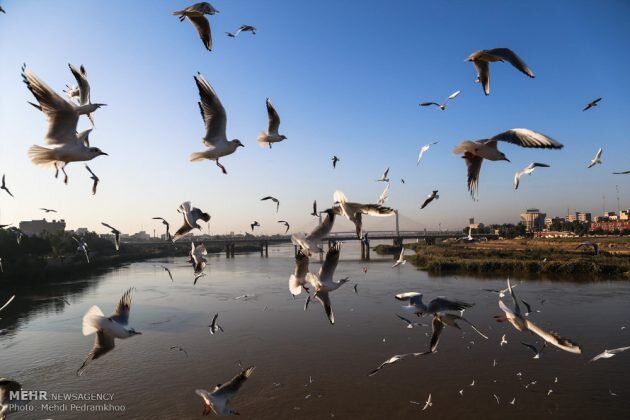Let’s unite to preserve bird habitats

TEHRAN – We must unite globally to protect the migratory birds and the habitats they depend on to survive.
“Sing, Fly, Soar – Like a Bird!” is the theme of this year’s World Migratory Bird Day, an annual global campaign dedicated to raising awareness of migratory birds and the need for international cooperation to conserve them.
This year the campaign focused on the phenomena of “bird song” and “bird flight” as a way to inspire and connect people of all ages around the world in their shared desire to celebrate migratory birds and to unite in a common, global effort to protect birds and the habitats they need to survive.
Celebrated across the world on two peak days each year – on the second Saturday in May and the second Saturday in October – World Migratory Bird Day is the only international awareness-raising and education program that celebrates the migration of bird species along all the major flyways of the world.
The birds’ sound has always been pleasant and soulful, the pleasure of hearing the sound of birds in the morning is indescribable especially in these days that the pandemic has kept many at home.
Birds also play an important role in maintaining ecosystem function by controlling pests, pollination, and helping seed dispersal.
Hosting over 600 species of birds, Iran is a climatically rich country, so it is said that the number of bird species in Iran is higher than in the whole of Europe. A wide range of wetlands is the reason behind migratory birds choosing Iran for an annual wintering habitat, as a large number of birds fly a thousand miles each year to benefit from this rich climate.
Every year, from early-September to late-February, Iran hosts rare species of migratory birds heading from north to the southern countries due to reduced seasonal temperatures and food availability.
It is estimated that there are about 50 billion birds in the world out of 9,000 species, many of which are migratory. Accordingly, about 5 to 7 million birds migrate to Iran in different seasons. There are about 530 species of birds in Iran, 320 of which are migratory species, some of which are native species.
Among the various groups of migratory birds wintering in Iran, the largest population belongs to the group of geese, swans, and ducks amounting to 781,499 and the smallest population of 7 are the long-tailed ducks or oldsquaw.
The provinces of Mazandaran and Golestan are the first provinces with the highest number of migratory birds for having sufficient resources, as the movement of migratory birds is closely linked to the seasonal availability of resources.
What pushes migratory birds toward disappearance?
Bird migration is the regular seasonal movement, often north and south along a flyway, between breeding and wintering grounds. Many species of bird migrate. Migration carries high costs in predation and mortality, including from hunting by humans, and is driven primarily by the availability of food.
Unsustainable development in Iran has resulted in habitat fragmentation posing a serious threat to migratory birds. Also, anthropogenic disturbance such as agricultural expansion has resulted in dramatic global habitat loss and fragmentation.
Moreover, poaching, overgrazing, and long-standing drought spells have also impacted habitat destruction which ultimately results in birds’ total extinction.
The most tragic of which was the death of over 30,000 migratory birds in Miankaleh international wetland in late January 2020, which was announced by the veterinary organization that the birds have been killed due to the “botulinum toxin”, but it was finally announced that some fishermen, landowners or hunters may have thrown poison into the water and killed these species.
Dalmatian pelican, Siberian crane, lesser white-fronted goose, and white-headed duck are among the endangered migratory birds which migrate to Iran.
Protection of precious species
The protection of the habitats of these amazing creatures and the prevention of their destruction requires more coordination between related bodies, the support, and participation of local communities.
With the protective measures and cooperation of responsible organizations, every year, we will host a much larger number of migratory birds and the prosperity of more responsible nature tourism and bird watching.
MG
Leave a Comment